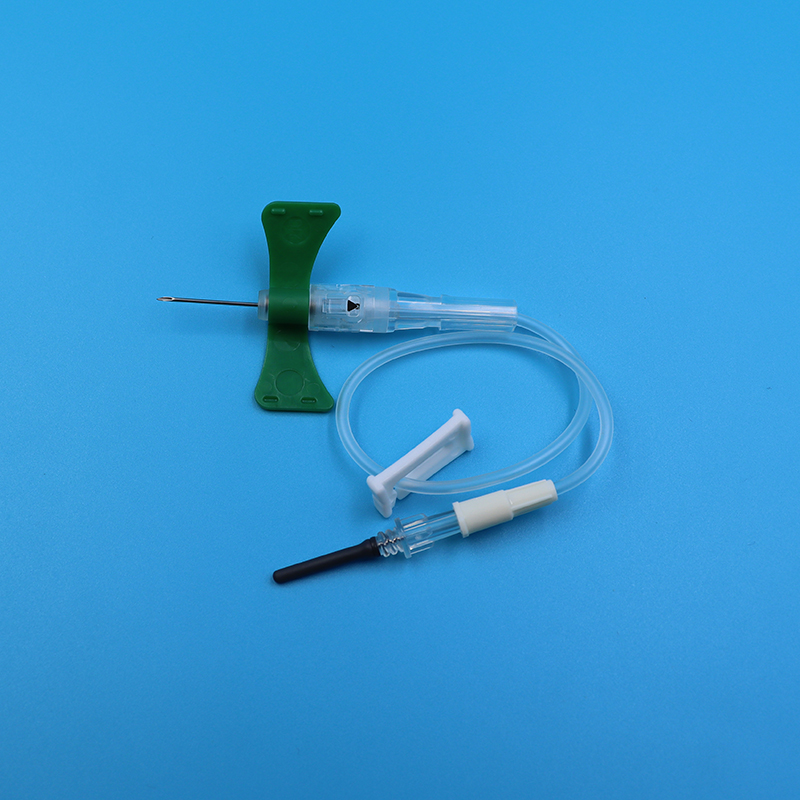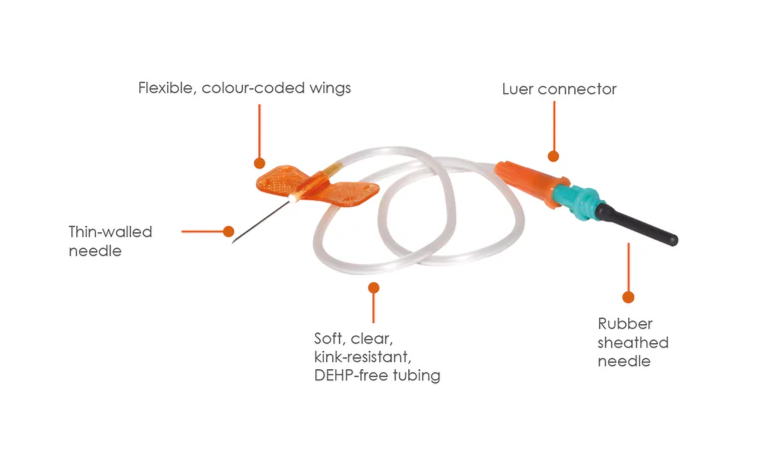Butterfly needles, also known as winged infusion sets or scalp vein sets, are a specialized type of medical device widely used in clinical and laboratory settings. Their unique winged design and flexible tubing make them ideal for venipuncture, especially in patients with small or fragile veins. This guide explores the key applications, advantages and disadvantages, structural parts, and sizing standards of butterfly needles to help medical professionals and procurement teams make informed decisions.
Applications of Butterfly Needles
Butterfly needles are used in a variety of clinical procedures, including:
- Blood Collection: They are especially useful for drawing blood from patients with small, rolling, or fragile veins, such as pediatric, geriatric, or oncology patients.
- IV Infusion Therapy: Butterfly needles are frequently used for short-term intravenous access to deliver medications or fluids.
- Diagnostic Testing: They are suitable for obtaining blood samples for laboratory analysis with minimal patient discomfort.
- Home Healthcare: Their ease of use makes them a preferred option for at-home blood draws or infusions conducted by trained caregivers.
The ergonomic design offers excellent control during insertion, reducing vein trauma and improving success rates in difficult venipuncture cases.
Advantages and Disadvantages
Like all medical devices, butterfly needles come with both benefits and limitations.
Advantages:
- Easier access to small or superficial veins
- Less painful and more comfortable for patients
- Wings provide stability and greater control during insertion
- Lower risk of vein collapse
- Ideal for multiple blood draws or short-term infusions
Disadvantages:
- Generally more expensive than standard straight needles
- Not recommended for long-term IV therapy
- Increased risk of needlestick injury if not handled properly
- Some models may lack built-in safety mechanisms
Despite their limitations, butterfly needles remain a popular and effective choice for venipuncture in specific patient populations.
Parts of a Butterfly Needle
Understanding the components of a butterfly needle can help clinicians use them more effectively and safely. A typical butterfly needle includes:
- Needle Tip: A fine, sharp stainless steel needle that easily penetrates the vein.
- Plastic Wings: Flexible “butterfly” wings on either side of the needle to assist with grip and needle placement.
- Flexible Tubing: Transparent tubing connects the needle to the collection system, allowing movement without dislodging the needle.
- Luer Connector: This connector attaches to syringes, vacuum collection tubes, or IV lines.
- Safety Feature (optional): Some advanced models include a built-in needle protection device to prevent accidental injuries.
Each part plays a crucial role in delivering a safe and efficient venipuncture experience.
Butterfly Needle Sizes and Color Codes
Butterfly needles are available in a range of gauge sizes, typically between 18G and 27G. Each gauge size is identified by a unique color, which helps clinicians select the appropriate size for the patient and procedure.
| Gauge | Color | Outer Diameter (mm) | Common Use Case |
| 21G | Green | 0.8 mm | Standard venipuncture and IV infusion |
| 23G | Blue | 0.6 mm | Geriatric and pediatric blood collection |
| 25G | Orange | 0.5 mm | Neonatal and delicate veins |
| 27G | Grey | 0.4 mm | Specialized or low-volume blood draws |
Larger gauge numbers indicate smaller needle diameters. Medical professionals choose the needle size based on the vein size, viscosity of the fluid being infused, and patient tolerance.
Conclusion
Butterfly needles are an essential tool in modern healthcare. Their design offers precision, safety, and comfort, making them highly suitable for blood collection and IV infusion in various clinical situations. While they may not be appropriate for every scenario, their benefits often outweigh their drawbacks in specialized applications.
For hospitals, clinics, and medical suppliers looking to ensure patient comfort and procedural efficiency, butterfly needles remain a trusted and valuable medical supply. Understanding their structure, function, and specifications allows healthcare professionals to use them more effectively and confidently.
Post time: Jul-07-2025









